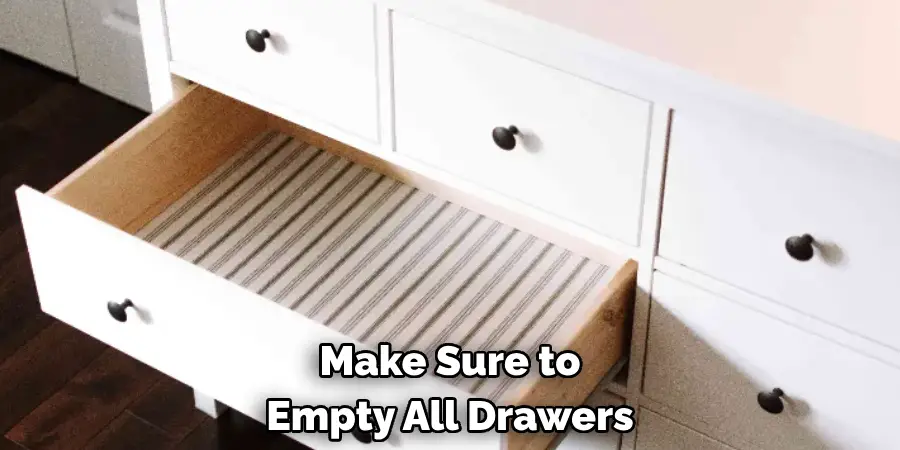Are you considering getting new flooring in a room or two within your home? If so, it can be an exciting and rewarding experience to give your living space an upgrade. But something often overlooked when swapping out old flooring for something new is deciding what to do with any existing furniture in the space that could get damaged by the installation process.

There are plenty of options and strategies to consider when figuring out how to move furniture during this project – so if you’re wondering what the best way might be, just keep reading! In this blog post, we’ll cover everything from do-it-yourself insights on what to do with furniture when getting new flooring around your house without damaging either them or your existing floors — as well as tips on finding reputable services who can handle big jobs professionally.
Necessary Items
Before moving furniture around the room, ensure you have some everyday household items. These include:
- Furniture sliders
- Moving blankets or old towels
- Plastic wrap or rubber bands
- Cardboard sheets or carpet squares
10 Tips on What to Do With Furniture When Getting New Flooring
Tip 1: Furniture Sliders
If you are planning to move furniture by yourself, investing in a set of furniture sliders is a must. These handy tools are typically made of plastic or rubber and can help you easily glide furniture across the floor without causing any scratches or damage. They come in various sizes and shapes to accommodate different types of furniture, such as chairs, sofas, and tables.

Tip 2: Lift Furniture Instead of Dragging
When moving heavy furniture, avoid dragging it across the room, as it can cause damage to both your furniture and flooring. Instead, lift the furniture with the help of another person or use a dolly or hand truck for more oversized items.
Tip 3: Use Moving Blankets or Old Towels
For larger pieces of furniture, such as dressers or bookcases, wrap them in moving blankets or old towels to protect them from scratches and dings during the moving process.
Tip 4: Protect Furniture Legs
Consider placing small carpet or cardboard squares underneath to prevent damage to furniture legs on hard flooring surfaces. This will also make it easier to slide the furniture across the floor.
Tip 5: Empty Drawers and Shelves
Before moving any furniture, make sure to empty all drawers and shelves. Not only does this make the furniture lighter, but it also prevents any items from falling or getting damaged during the move.

Tip 6: Use Plastic Wrap or Rubber Bands
Use plastic wrap or rubber bands to secure more miniature furniture with drawers. This will prevent the drawers from sliding open while being moved.
Tip 7: Disassemble When Possible
If your furniture can be easily disassembled, it may be easier to move into smaller pieces. This is especially true for large and bulky items like beds or bookcases.
Tip 8: Protect Your New Flooring
Before moving any furniture back into the room, protect your new flooring by placing a barrier underneath the furniture, such as a tarp or cardboard sheets. This will prevent any potential damage from occurring during the move.
Tip 9: Hire Professional Movers
If you have large and heavy pieces of furniture that are difficult to move by yourself, consider hiring professional movers with experience moving furniture around during flooring installations. They will have the necessary equipment and expertise to move your furniture safely without causing any damage.

Tip 10: Consider Temporary Storage
Consider temporary storage options if you have a lot of furniture or large pieces that need to be moved out of the room. This will keep your furniture safe and secure during the flooring installation process and allow for more effortless movement.
When getting new flooring, it’s essential to carefully plan and prepare for how you will handle your furniture during the process. Whether you decide to move the furniture yourself or hire professionals, following these tips can help ensure your furniture and new floors remain undamaged. Keep furniture in the way of upgrading your living space – with proper preparation and care, you can have a beautiful new floor and well-maintained furniture.
8 Things to Avoid When Getting New Flooring
While there are many steps you can take to handle your furniture during a flooring installation, there are also some things you can avoid to prevent damage or complications. These include:
1. Don’t Drag Heavy Furniture Across the Floor
As mentioned before, dragging heavy furniture can cause damage to both your furniture and flooring. It’s important to lift and carry these items instead.
2. Don’t Forget to Protect Your Furniture
Just as you will protect your new flooring, make sure to also protect your furniture by using moving blankets, plastic wrap, or other tools to prevent scratches and dings.
3. Avoid Rushing the Process
Take your time when moving furniture around during a flooring installation. Rushing can lead to mishaps and damage to both your furniture and floors.
4. Don’t Neglect Your Safety
Use proper lifting techniques and ask for help when moving heavy items to avoid injury. It’s also essential to wear appropriate clothing and footwear for the task.

5. Avoid Ignoring Manufacturer Instructions
If you have purchased new furniture, follow any assembly or moving instructions the manufacturer provides. This can help prevent damage and ensure the longevity of your furniture.
6. Don’t Ignore Weight Limits
Be mindful of weight limits when placing furniture on your new floors. Too much weight in one area can cause damage to the flooring over time.
7. Avoid Placing Furniture Directly on Newly Installed Floors
Allow your new floors to settle appropriately before placing heavy furniture on them. This can help prevent any potential damage or issues with the flooring.
8. Don’t Use Harsh Chemicals for Cleaning
When cleaning your new floors, avoid using harsh chemicals that can potentially damage the flooring or leave behind a residue. Stick to recommended cleaning products and methods provided by the manufacturer.
By following these tips and avoiding potential mistakes, you can successfully navigate the process of moving furniture during a flooring installation without causing any damage. Remember to prioritize both the safety of yourself and your furniture, as well as protecting your new floors for years to come. With proper planning and care, you can achieve a smooth and stress-free flooring upgrade experience. So, don’t let furniture get in the way of your home renovation dreams – with a little extra effort and precaution, you can have beautiful flooring and well-maintained furniture.
8 Additional Tips for Furniture Moving During Flooring Installation
In addition to the tips mentioned above, here are eight more helpful hints for moving furniture during a flooring installation:
1. Consider Using Furniture Sliders
Furniture sliders are small discs or pads that can be placed under furniture legs to make it easier to slide them across the floor without causing damage.
2. Use Dollies or Hand Trucks for Heavy Items
Consider using a dolly or hand truck to move large and heavy items more easily. This can also help prevent personal injury from lifting and carrying these items.
3. Plan for Furniture Placement
Before moving furniture out of the room, plan where each piece will go once the new flooring is installed. This will help save time and prevent any unnecessary rearranging later.
4. Label Drawers and Cabinets
If you need to remove drawers or cabinets from furniture, label them so they can easily be placed back in the correct spot during reassembly.
5. Utilize Storage Bins for Small Items
For smaller items such as books or decor, consider using storage bins to keep them organized and easy to move. This can also help prevent any damage from occurring.
6. Use Furniture Dollies for Large Pieces
Furniture dollies can safely move vast pieces of furniture, such as sofas or bookcases, without causing strain or damage.
7. Don’t Overload Furniture Drawers or Shelves
Avoid overloading drawers or shelves in furniture that will be moved. This can make the piece heavier and more challenging to move, potentially damaging the furnishings.
8. Communicate with Your Flooring Installers
Make sure to communicate with your flooring installers about any specific requirements or concerns you have regarding moving furniture. They may have helpful tips or suggestions to make the process smoother for you and them.
Following these additional tips can ensure a successful furniture moving experience during a flooring installation. Always prioritize safety and take precautions to protect your furniture and new floors. Proper planning and care allow you to transition to your upgraded living space seamlessly.
Frequently Asked Questions
Do I Need to Remove All Furniture From the Room Before Installing New Flooring?
Removing all furniture from the room before installing new flooring is recommended, as this will make the process easier and prevent any potential damage to your furnishings or floors. However, if large or heavy items cannot be moved, consider hiring professional movers to assist with the process.
How Soon Can I Move Furniture Back Onto My Newly Installed Floors?
It is best to wait at least 24-48 hours before moving furniture back onto newly installed floors to allow them time to settle and adjust appropriately. This will help prevent any potential damage or issues with the flooring.
What Types of Flooring are Most Durable for Heavy Furniture?
For heavy furniture, opting for more complex and durable flooring options such as hardwood, tile, or laminate is generally recommended. These types of flooring are less likely to be damaged by heavy weight over time. However, research the specific type and brand of flooring you choose for its durability and weight-limit capacity.
Final Thoughts
A flooring installation is an exciting home improvement project, but it can also be stressful when handling furniture. However, with these tips on what to do with furniture when getting new flooring in mind, you can confidently move and protect your furniture, leaving you with beautiful new floors and well-maintained furniture. So don’t hesitate to upgrade your living space – just remember to plan and follow these guidelines for a smoother and easier furniture-moving experience.
Proper preparation and care can help ensure your furniture and floors remain in good condition during a flooring installation. Removing furniture, using proper techniques for moving heavy items, protecting both furniture and flooring and avoiding potential mistakes are all critical factors in having a successful flooring upgrade experience.

